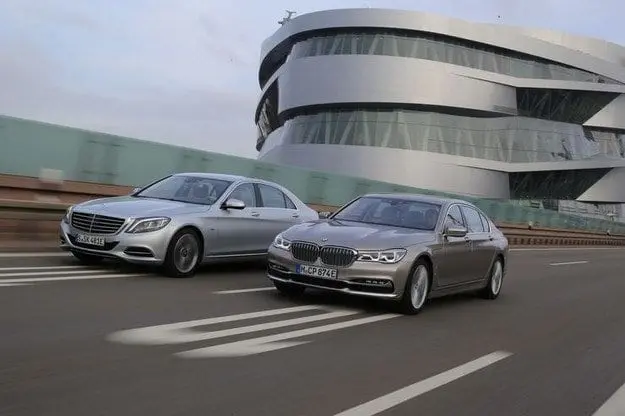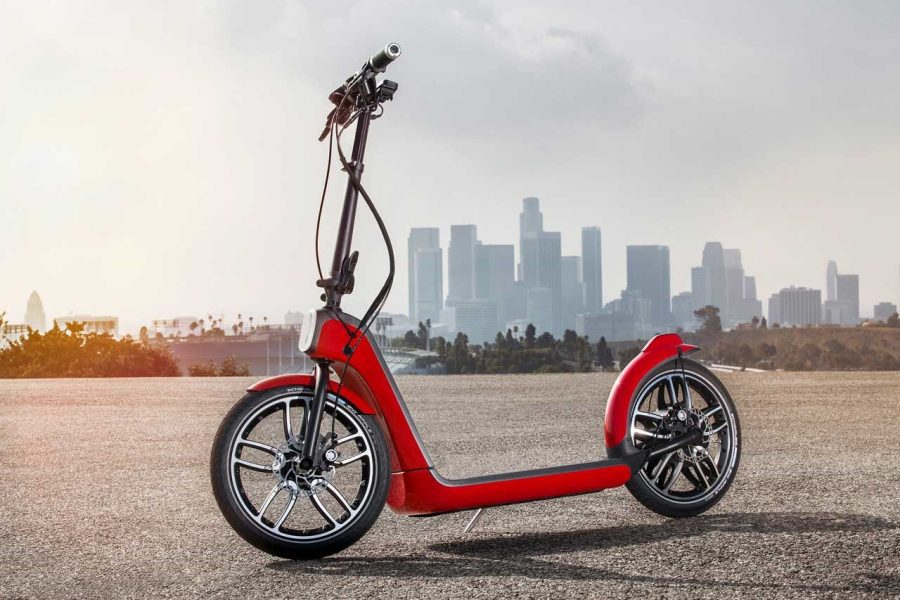
Test drive BMW 740Le against Mercedes S 500 e

What happens in real life with large models of electric motors?
Savings, said the English philosopher and politician Francis Bacon, who lived in the 100th century, is one of the best ways to get rich. Plug-in versions of the BMW “Week” and the Mercedes S-Class certainly require the opposite approach – you have to be rich to start saving. The arithmetic is simple, because the prices for two cars are around 000 euros. Such a combination would suit politicians, such as the Prime Minister of Baden-Württemberg, Winfried Kretschmann, who drives an S 500 e and believes that his car "sets standards in terms of efficiency and environmental protection." CO2 emissions are 65g/km for a luxury liner with a system power of 442hp. and the weight of 2,2 tons really sounds fantastic. Even more impressive emissions figures are offered by the competitor BMW 740Le, which has a "modest" 326 hp of system power. We will see for ourselves how close the given data of manufacturers are to reality.
Quiet and balanced six-cylinder engine
Mercedes announces a 33 km run with a pure electric motor, which is not enough for the Prime Minister to drive from his home to his office in downtown Stuttgart (roughly 100 km). But there are still enough of them to get around in urban areas without emissions.
The gasoline engine of the car turns on after 22 kilometers, eight more - after 740 le. Not particularly impressive performance, which can be achieved if you plug the car into the outlet every night after work. Both models require about nine kilowatt-hours of electricity to fully charge, which is negligible compared to the gasoline consumption of a hybrid drive - in auto motor und sport economy mode, BMW is 6,7 liters.
It is more expensive to drive a Mercedes, which consumes 7,9 liters under the same conditions. However, this is only part of the total because the S-Class benefits from the internal combustion engine in terms of driving comfort. Unlike BMW, it has a V6 turbo unit that, without the help of an electrical system, more easily carries the weight of a 2,2-ton limousine. The 740 Le has to make do with the B48 four-cylinder turbo engine that is available in many other models from the brand. The truth is that it can hardly be blamed for any shortcomings other than the distinct sound of a four-cylinder engine when you are out of the car - yet it has almost the same power as the most powerful versions of the latest naturally aspirated N54 ( with the advantage of the current engine in terms of torque), the memory of which is still fresh. The luxurious flagship engine has a maximum output of 258 hp. with a torque of 400 Nm, it easily picks up speed even from low revs and, mind you, together with the electric booster, accelerates the car to 100 km / h in 5,5 seconds. Its advantages over the Mercedes unit include fuel consumption. In the ams profile for plug-in hybrids, the model consumes 1,7 liters of gasoline per 100 km, but the electric consumption is slightly higher (15,0 versus 13,4 kWh per 100 km for Mercedes). In terms of carbon emissions according to the German energy balance sheet (including CO2 emissions from electricity generation), this means 156 g/km or 30 grams less than the S 500 e. This is not included in the fuel consumption according to the NEFZ (NEDC) and electricity generation is considered CO2 neutral.
Difference of 2000 euros to Li
Buying such a car is especially justified for people who, in most cases, have the opportunity to park next to charging stations. In Germany, the 740 Le is exactly 3500 euros more expensive than the similar 740 Li with a six-cylinder engine, and taking into account the difference in equipment, the deficit is reduced to 2000 euros. This means that about 1000 liters of fuel must be saved to compensate for this difference.
For Mercedes, things are a little different from the S 500 with its 455 hp V6. with a long base is as expensive as the model under test. In everyday life, a VXNUMX-powered car provides a smoother ride than BMW's four-cylinder model. However, we do not know if this has anything to do with the Prime Minister of Baden-Württemberg.
CONCLUSION
By itself, the Mercedes gasoline engine gives an advantage over the BMW. This is exactly the engine that the buyer expects from a car of this class. The BMW machine runs somewhat unmodified for a similar model. Its advantage is lower fuel consumption, but this is not a particular advantage in this segment. Undoubtedly, in both machines, the combination of a gasoline engine, an electric motor and an automatic transmission is ideal. The more rounded shape of the Mercedes is also in line with the idea of increased driving comfort.
Text: Heinrich Lingner
Photo: Hans-Dieter Zeifert
